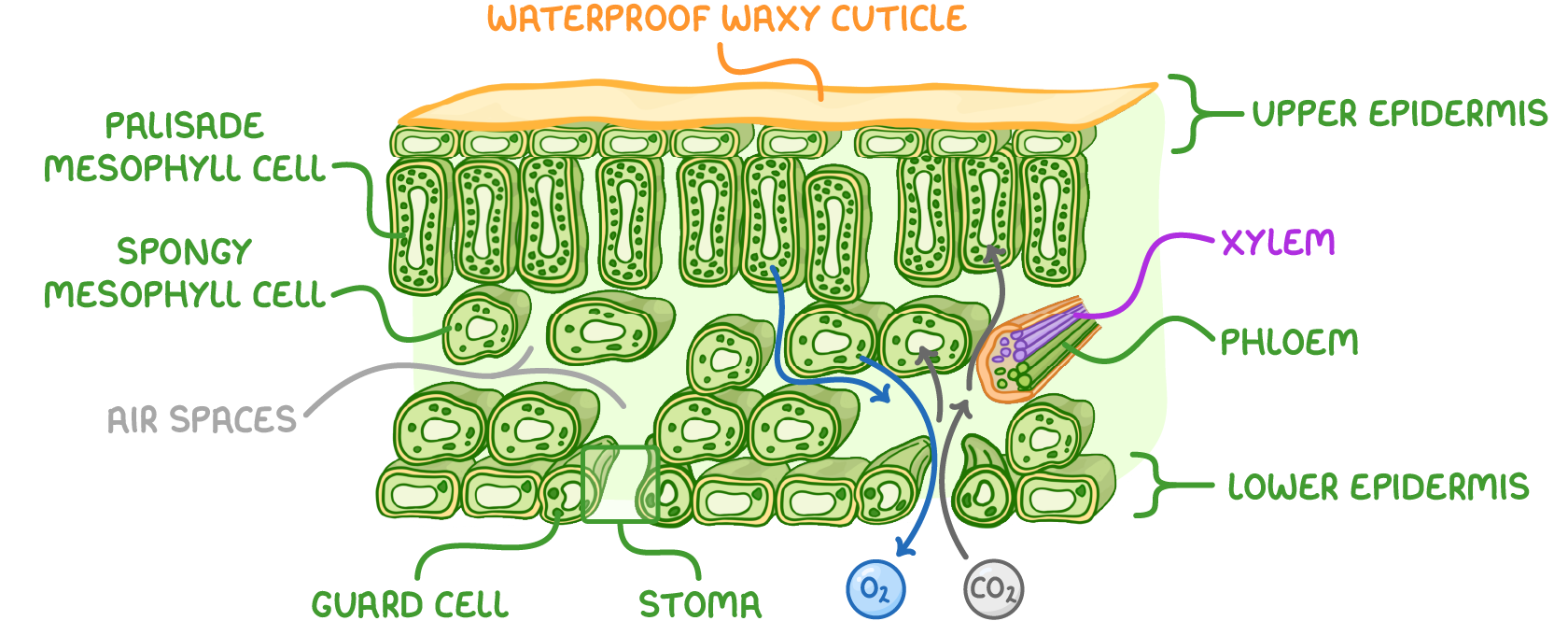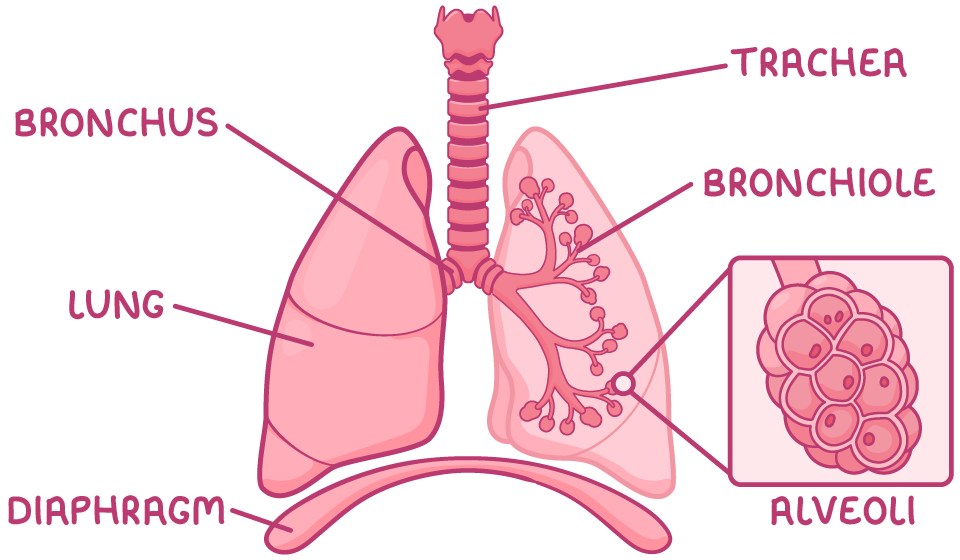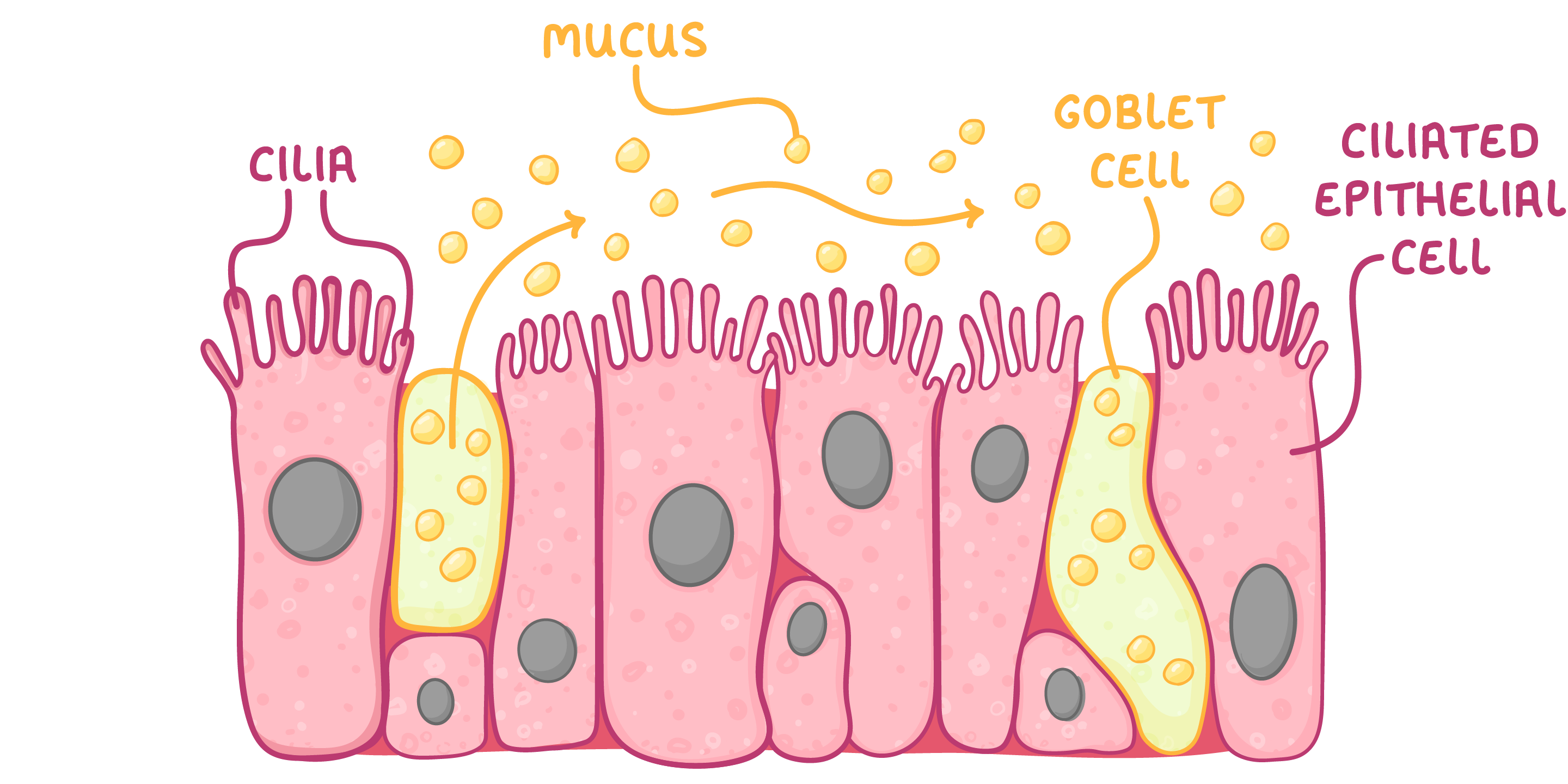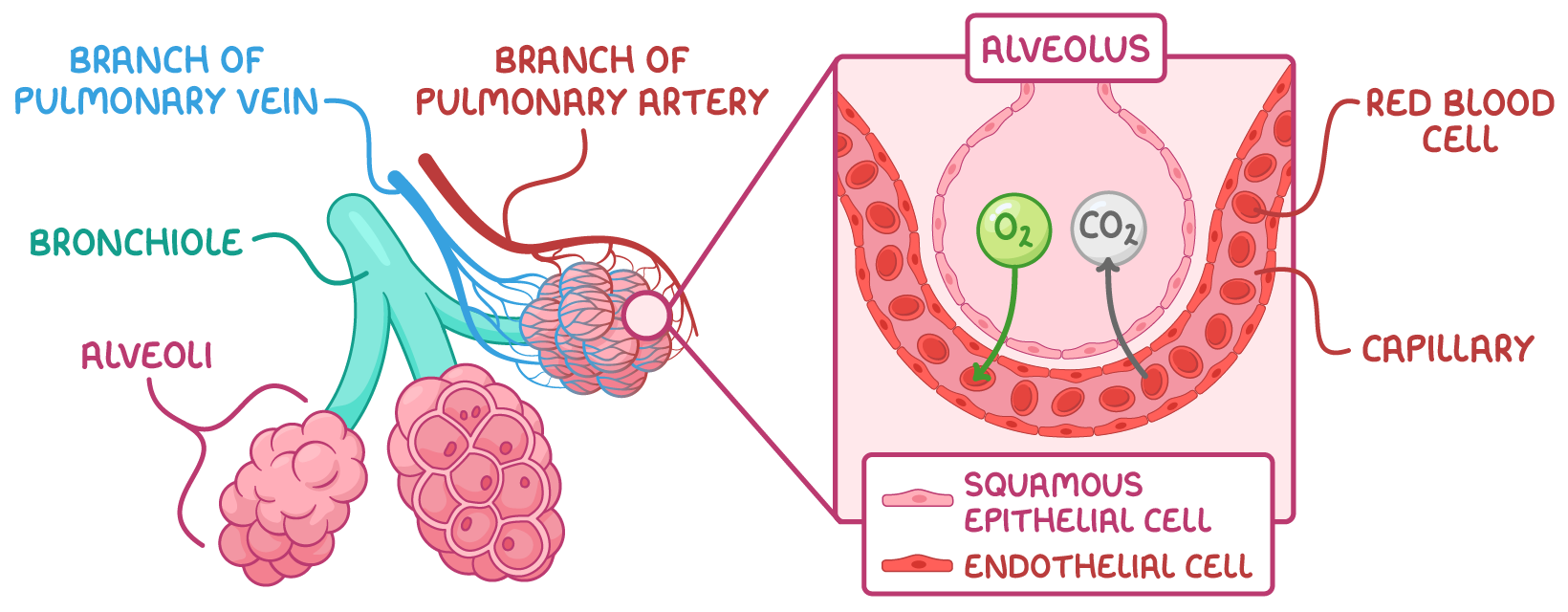Plant & Human Gas Exchange
1/9
Earn XP
Description and Tags
Name | Mastery | Learn | Test | Matching | Spaced |
|---|
No study sessions yet.
10 Terms
Structure of a leaf
Adaptations for gas exchange:
Many stomata - no cell is far from a stoma so short diffusion pathway.
Air spaces - provides a network for gases to quickly come into contact with mesophyll cells.
Mesophyll cells - large surface area of mesophyll for rapid diffusion.

Limiting water loss in plants
Stomata:
Each stomata is surrounded by a pair of guard cells.
When the guard cells are turgid, the stomata is open and when the guard cells are flaccid, the stomata is closed.
In this way they can control the rate of gas exchange to balance the conflicting needs of gas exchange and control of water loss.
Wax cuticle:
Plants have a waterproof waxy cuticle on the top layer of their leaves.
Xerophytes
Xerophytes are plants adapted to living in dry environments with limited water availability.
Adaptations to reduce water loss:
Thick waxy cuticle - reduces water loss through evaporation.
Rolling leaves - this encloses the stomata on the lower surface. Air will get trapped and will have a very high water potential, but there is no water potential gradient between the inside and outside of the leaf, so no water loss.
Hair on leaves - These trap most air against the leaf to reduce the water potential gradient, so less water is lost by evaporation.
Stomata in pits - trap moist air next to the leaf, reducing the water potential gradient.
Small leaves - reduce the surface area in which water can be lost.
Pathway of air in mammalian lungs
Air first enters the trachea.
Air travels into the 2 bronchi, with 1 bronchus going into each lung.
Air travels into smaller airways called bronchioles.
Air travels into clusters of air sacs called alveoli at the end of the bronchioles.

Structure and adaptations the trachea
Structure:
Large, flexible tube that carries air from the throat down to the lungs.
Adaptations:
Rings of cartilage to prevent collapsing.
Elastic tissue contains elastic fibres with elastin that allows stretching.
Lined with ciliated epithelial cells and goblet cells.
Structure and adaptations of the bronchi
Structure:
The 2 main branches extending from the trachea, each leading to 1 lung.
Adaptations:
Reinforced with cartilage to prevent collapsing.
Elastic tissues contain elastic fibres with elastin that allows stretching
Lined with ciliated epithelial cells and goblet cells.
Structure and adaptations of bronchioles
Structure:
Bronchioles are smaller airways branching from the bronchi that carry air to the alveoli.
Adaptations:
No cartilage, so can change shape
Elastic tissue contains elastic fibres with elastin that allows stretching
Simple squamous epithelium.
Ciliated epithelium
Ciliated epithelium is located throughout most airways.
Is made up of many goblet cells and ciliated epithelial cells.
Goblet cells - these produce and secrete mucus that traps dust and microbes.
Cilia on ciliated epithelial cells - These waft the mucus upwards to the mouth so it can be swallowed.

Alveoli
Alveoli are tiny air sacs clustered at the ends of the bronchioles. They are surrounded by a network of capillaries so gases can be exchanged between the air in the alveoli and the blood.
How gas is exchanged:
O2 diffused from the alveoli into the pulmonary capillaries where it binds to haemoglobin in red blood cells.
Carbon dioxide dissociates from haemoglobin and diffuses from the blood into the alveoli.
Adaptations of the aveoli for gas exchange
Walls consist of one layer squamous epithelial cells, allowing rapid diffusion
Large surface area, increasing the rate of gas exchange
Partially permeable, meaning only certain gases can move across the wall
Surrounded by dense network of capillaries, bringing blood close to air for gas exchange
Ventilation of air, maintaining a steep diffusion gradient
Collagen fibres, preventing alveoli from bursting and limits overstretching
